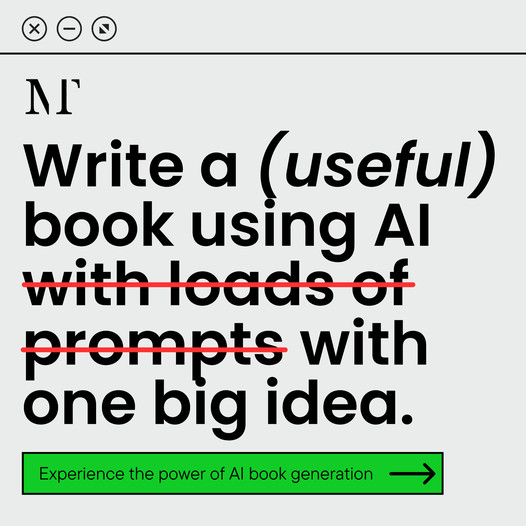Crafting Realistic Dialogue
Writing dialogue that hits home is like a secret trick every writer should have up their sleeve. When you nail it, characters jump off the page, emotions run wild, and the story practically writes itself. Picking up on the subtleties of human conversation can be a goldmine for your storytelling.
Why Realistic Dialogue Matters
Snappy dialogue doesn’t just spice up your story; it’s the glue that makes readers stick around. Here’s why:
- Getting to Know Characters: Words can spill secrets about what makes a character tick.
- Keeping the Story Rolling: A good back-and-forth can add spice to the story and stir up drama.
- Stirring Emotion: Real talk pulls readers into the heat of the moment, feeling every twist and turn.
Key Ingredients for Believable Dialogue
Think about these when you’re crafting those killer conversations:
| Element | What it Means |
|---|---|
| Natural Vibes | Think real-life chatter, complete with “uhs” and “ums” that we all use. |
| Distinct Voices | Every character needs their own vibe—whether it’s a quirky slang or a formal tone—to match who they are. |
| Background Influence | The talk should fit the scene, mood, and who’s chatting it up. |
| Unspoken Layers | Sometimes it’s all about reading between the lines. What’s left unsaid can speak volumes. |
When you blend these elements, you create conversations that feel natural, pulling readers in like a familiar chat with an old friend. Want more tips on juicing up your dialogue? Check out how to write compelling dialogue.
Tips for Writing Realistic Dialogue
Nailing that authentic chatter between characters? That’s gold! Here are some practical tips to spice up those conversational exchanges in your stories.
Eavesdrop on Everyday Chats
Got to tune into the real thing if you wanna get it right. Listen up when folks chat around you—whether in the park, on the bus, or in the café. Check out these bits:
| What to Listen For | What to Watch |
|---|---|
| Speech Styles | Notice how folks speak differently based on their age, where they’re from, or simply their vibe. |
| Filler Fluff | Spot those “um” and “uh” moments, the “likes” and “you knows” that sneak into chats. |
| Butt-ins | Conversations aren’t tidy; people talk over each other or shift topics on a dime. |
By sprinkling these elements into your storyline, you’re gonna breathe life into those character dialogues.
Snip the Extra and Keep it Snappy
Sure, real talks go off on tangents. But dialogue in your story? Each word should pull its weight – inform, add to a character, or push that plot further down the road. Here’s what to mull over:
| Snippet | Why It Matters |
|---|---|
| Slicing Clutter | A clear chat keeps readers in the loop. |
| Peppy Pace | Quick retorts ramp up the thrill or stress of a scene. |
| Character Insight | Picking words smartly tells us who the person is beneath the chit-chat. |
Each character needs a voice that propels the story, minus the padded chatter.
Hints Over Headlines
It’s not about spoon-feeding feelings or thoughts; it’s smarter to hint. Let readers play detective, piecing together those whispers of emotion and motivation. Here’s how:
 What Poetry Feels Like
What Poetry Feels Like| Trick | How It Works |
|---|---|
| Hidden Layers | Slip in real meaning without characters spelling it out. |
| Setting the Scene | Actions or reactions can add layers to what’s being said. |
| Expressions & Gestures | Toss in a smirk or glare to amplify words. |
These tricks will bring emotions out to play, drawing readers in deeper into your tale.
Got a taste for better dialogue craft? Check out our other goodies like more tips right here or up your short story game there.
Developing Character Voice
Nailing down character voices is key to making your dialogue vibe and stick in the reader’s mind. Consistency in how your characters speak and leveraging dialogue to flesh out their personalities can take your writing to the next level.
Consistency in Speech Patterns
The way your characters talk is like their fingerprint in your story. Pay attention to the words they use, how they put their sentences together, and the phrases they throw around. Each character’s life story, personality, and background influence their unique way of speaking.
Think of it this way: a brainy professor might roll out with fancy words and long-winded sentences. But that laid-back teen? They’re gonna keep it chill with slang and snappy lines. Keep track of these quirks to make sure each voice holds up from page to page.
| Character Type | Speech Pattern |
|---|---|
| Academic | Fancy sentences, posh vocabulary |
| Teenager | Chill slang, laid-back talk |
| Elderly | Old-school sayings, a bit slower |
| Professional | Straight-to-the-point, industry lingo |
Using Dialogue to Reveal Character Traits
Using dialogue to show off your characters’ traits adds flavor and authenticity to your story. What they say and how they say it can hint at what drives them, their moods, and what they truly value.
- Word Choice: The words a character throws around can show off their smarts, job, or hometown.
- Tone: The vibe of their voice—whether they sound ticked off, thrilled, or just dripping in sarcasm—can spill lots about what’s going on inside their head.
- Conflict: Watch how they react when the heat’s on. A laid-back type might smooth things over, while a hothead could lash out.
Playing around with dialogue to bring out these sides can help you craft characters that feel real and connect with your audience. Want more on this topic? Check out our piece on how to write compelling dialogue.
Focusing on these elements will amp up the believability of your characters and beef up your narrative. Digging into character voice is crucial for making dialogue pop and stay memorable.
Adding Depth to Dialogue
Infusing your dialogue with layers gives your writing life and makes character interactions feel real. Crafting conversation with a touch of subtlety and bringing gestures into play are your go-to moves.
Implying Subtext
Subtext, the art of saying one thing while hinting at another, makes your dialogue pop. Characters rarely lay all their cards on the table. Letting words dance around can turn up the authenticity. Here’s how you can sprinkle some subtext in there:
-
Play with Ambiguity: Letting your characters weave in words that are open to interpretation keeps things intriguing.
Example Underlying Message “I love how you always know just what to say.” Is that sarcasm, or a real compliment? You be the judge. “I guess I’ll see you then.” Sounds like someone might not be thrilled about meeting up. -
Stir Up Some Conflict: Characters who dodge tricky subjects or keep their true thoughts under wraps can speak volumes without a word.
-
Mix in Tone and Context: The vibe a character brings to their lines can say as much as the words they use. Mind the mood and situation.
For a deeper dive on making dialogue shine, check out our piece on how to write compelling dialogue.
Utilizing Gestures and Actions
Mixing in gestures and actions with dialogue is like adding seasoning to a dish—it brings out the flavor. Actions paint pictures alongside words and tell their own stories. Here’s how to make it work:
-
Let Gestures Talk: Physical actions can back up what’s being said, adding layers to the scene.
Dialogue Gesture “I didn’t mean to upset you.” She bites her lip and looks away. “Of course, I trust you.” He closes himself off with crossed arms. -
Showcase Emotions through Reactions: A character’s physical response can spill their real feelings about a situation or the speaker.
-
Body Language Speaks Volumes: Injecting hints of what’s unsaid through body language shows more than words ever could—nerves, excitement, you name it.
Think about how gestures and expressions add layers to words in your storytelling. Combining how characters speak and move enriches the narrative. Boost your creative game with our writing exercises to improve creativity.
Dialogue Punctuation and Formatting
Get the nitty-gritty of punctuating and formatting dialogue down pat, and you’ll have your readers seamlessly following along like they’re eavesdropping on a juicy conversation.
Quotation Marks and Tags
First on the agenda: wrap up those spoken words in quotation marks. Those handy little tags—like “he said” or “she asked”—are like breadcrumbs leading readers to who’s chatting.
| Dialogue Element | Example |
|---|---|
| Direct Speech | “I love writing,” she said. |
| Questions | “Are you coming with us?” he asked. |
| Exclamations | “Watch out!” she shouted. |
Remember to keep your commas, periods, and other punctuation snug inside the quotation marks, while tags that come after dialogue are lowercase unless shouting out a name.
Dying to know more about writing smooth convo? Check out how to write compelling dialogue.
Paragraph Structure for Dialogue
Every time a new character starts yapping, hit the enter key for a fresh paragraph. It’s like a baton pass, indicating who’s talking. Here’s the lowdown:
| Example | Description |
|---|---|
| “I think we should head out early,” said John. “That way, we can avoid traffic.” |
Start a new paragraph with a new speaker. |
| “I don’t agree,” Sarah countered. “We can leave later.” | Keeps the chat easy to follow. |
This habit keeps the talking side of things shipshape and readable.
Handling Interruptions and Pauses
Cutting someone off or letting them trail off in a thought? Em dashes (—) scream interruption, while ellipses (…) handle the pauses and pondering.
| Example | Explanation |
|---|---|
| “I just want to—” | That em dash shows a chop mid-thought. |
| “Well, I thought… maybe we could—” | Ellipses invite a pause or stray thought. |
Using these can spice up dialogue, adding layers to characters and making your exchanges feel genuine. Peek at our how to develop characters in a story for more ways to beef up your characters.
Once you conquer dialogue punctuation and formatting, you’ll be telling stories like a champ, giving your readers a page-turner they can’t put down.

 Grab my poetry book, 'we're all just wanderers in the end' Here
Grab my poetry book, 'we're all just wanderers in the end' Here AD: Your Book Finally Written...
AD: Your Book Finally Written...